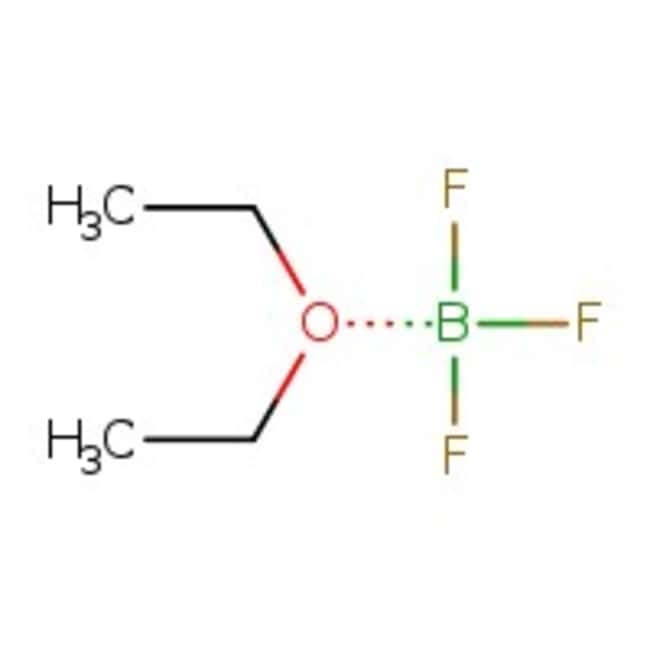Search Thermo Fisher Scientific
Boron trifluoride diethyl etherate, 98+%, Thermo Scientific Chemicals



Boron trifluoride diethyl etherate, 98+%, Thermo Scientific Chemicals
Chemical Identifiers
Specifications
Description
This Thermo Scientific Chemicals brand product was originally part of the Alfa Aesar product portfolio. Some documentation and label information may refer to the legacy brand. The original Alfa Aesar product / item code or SKU reference has not changed as a part of the brand transition to Thermo Scientific Chemicals.
Boron trifluoride diethyl etherate is used as a Lewis acid catalyst in Mukaiyama aldol addition, alkylation, acetylation, isomerization, dehydrations and condensation reactions. It is involved in the prepattion of polyethers in polymerization reactions. As a catalyst, it is used in the preparation of cyclopentyl- and cycloheptyl[b]indoles and other diborane. It is also used in sensitive neutron detectors in ionization chambers as well as monitoring radiation levels in earth’s atmosphere.
Solubility
Miscible with ether and alcohol.
Notes
Moisture sensitive. Store in cool place. Recommended to use under inet atomosphere. Incompatible with metals, acids, bases, alcohols, alkali metals, oxidizing agents and water. Reacts violently with water.
Figures
Documents & Downloads
Certificates
Frequently asked questions (FAQs)
Citations & References
Safety and Handling
Classification of the substance or mixture
CLP classification - Regulation(EC) No 1272/2008
Label Elements
Signal Word
Danger
Hazard Statements
H314 - Causes severe skin burns and eye damage
H332 - Harmful if inhaled
H372 - Causes damage to organs through prolonged or repeated exposure if inhaled
Physical Hazards
H226 - Flammable liquid and vapor
Precautionary Statements
P210 - Keep away from heat, hot surfaces, sparks, open flames and other ignition sources. No smoking
P280 - Wear protective gloves/protective clothing/eye protection/face protection
P303 + P361 + P353 - IF ON SKIN (or hair): Take off immediately all contaminated clothing. Rinse skin with water or shower
P304 + P340 - IF INHALED: Remove person to fresh air and keep comfortable for breathing
P305 + P351 + P338 - IF IN EYES: Rinse cautiously with water for several minutes. Remove contact lenses, if present and easy to do. Continue rinsing
P310 - Immediately call a POISON CENTER or doctor/physician